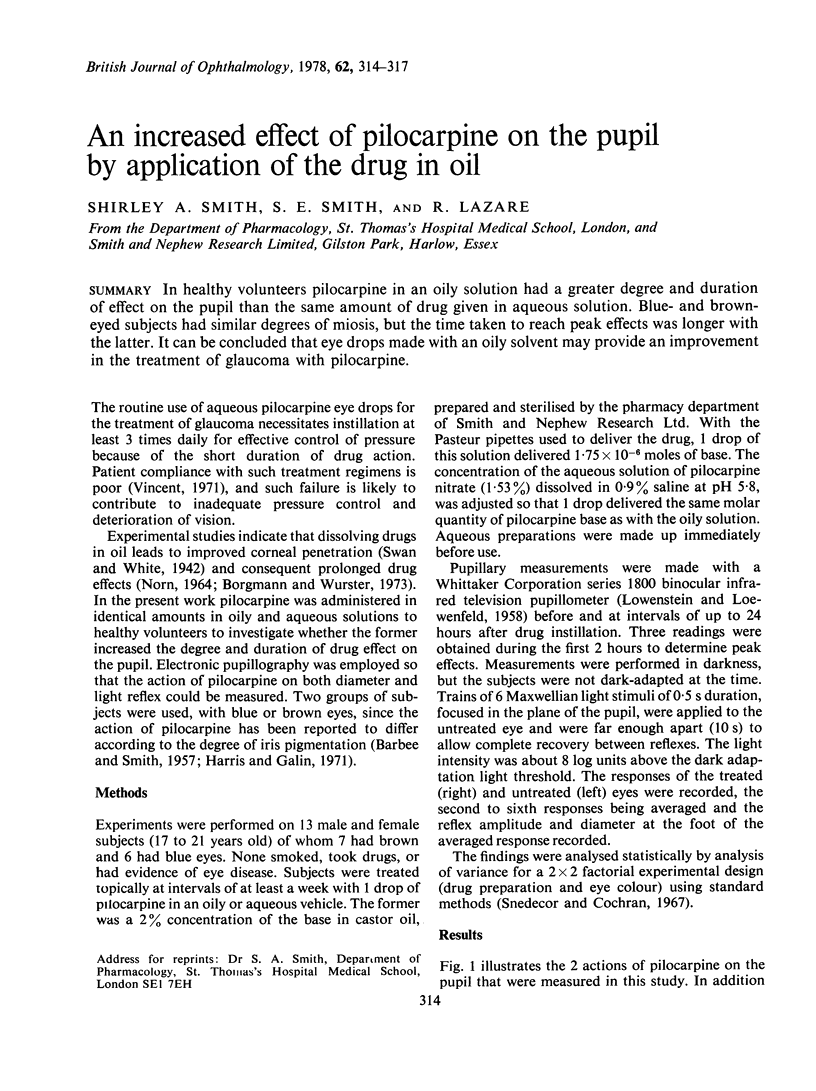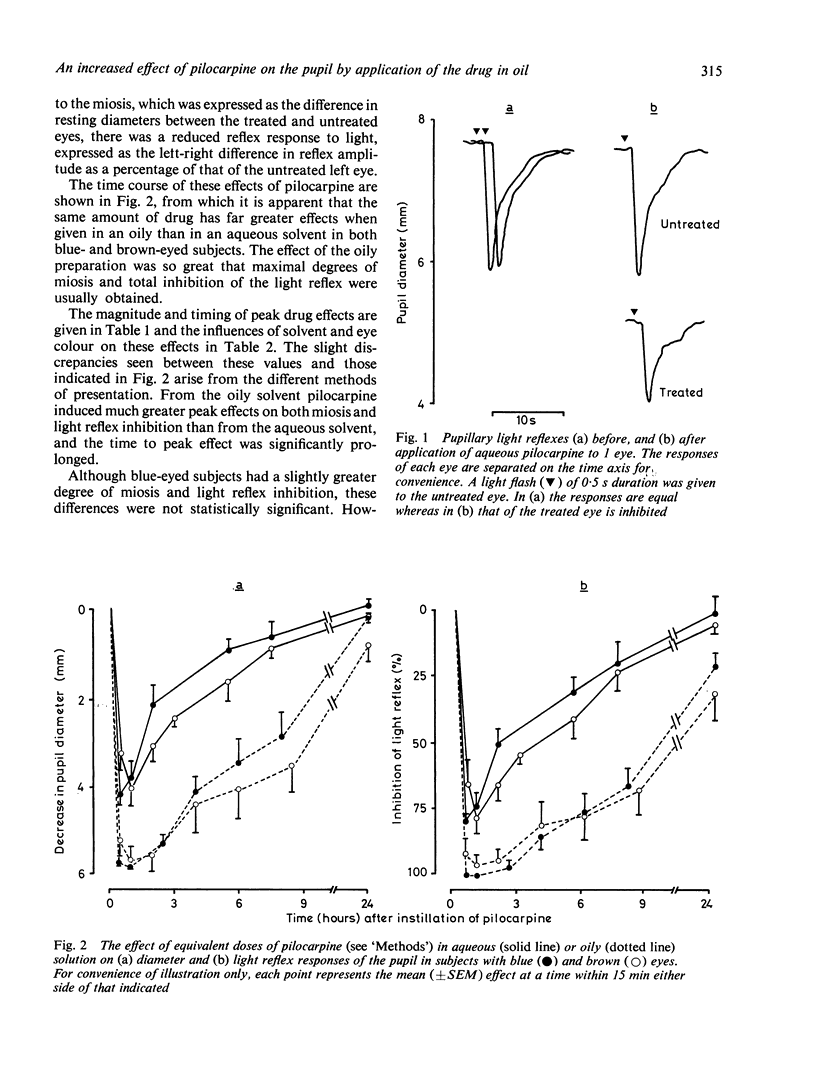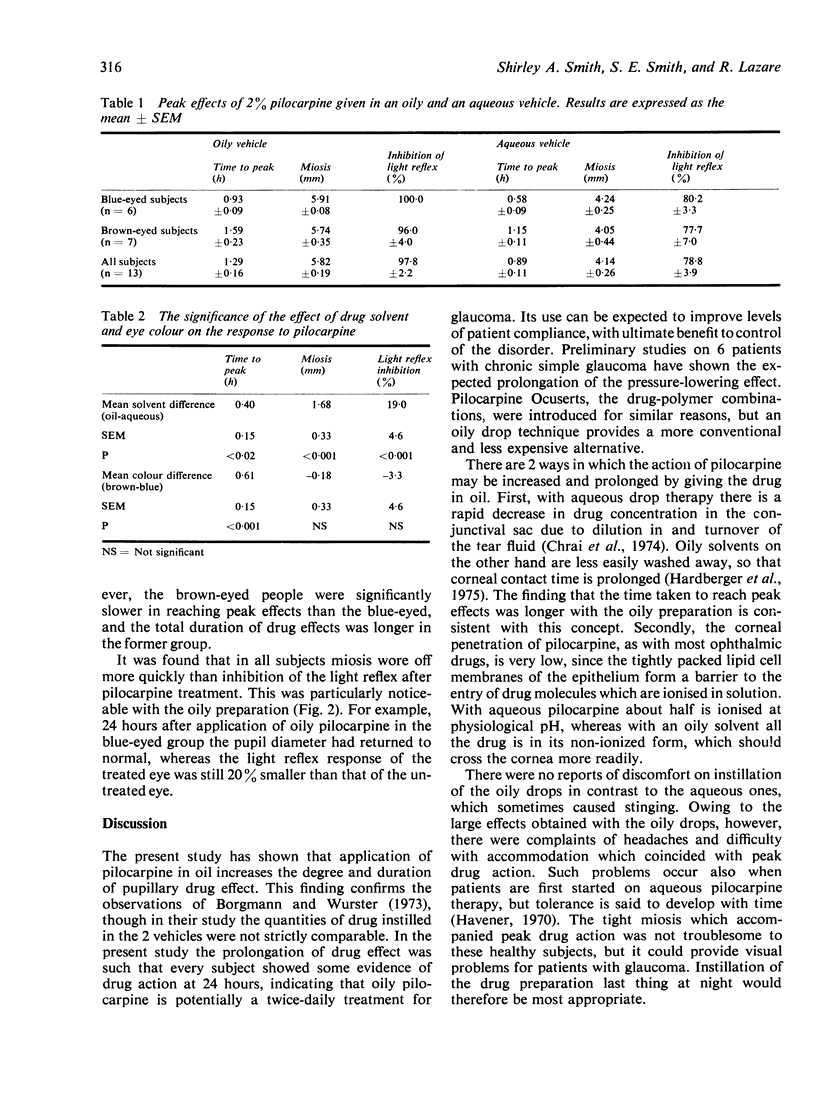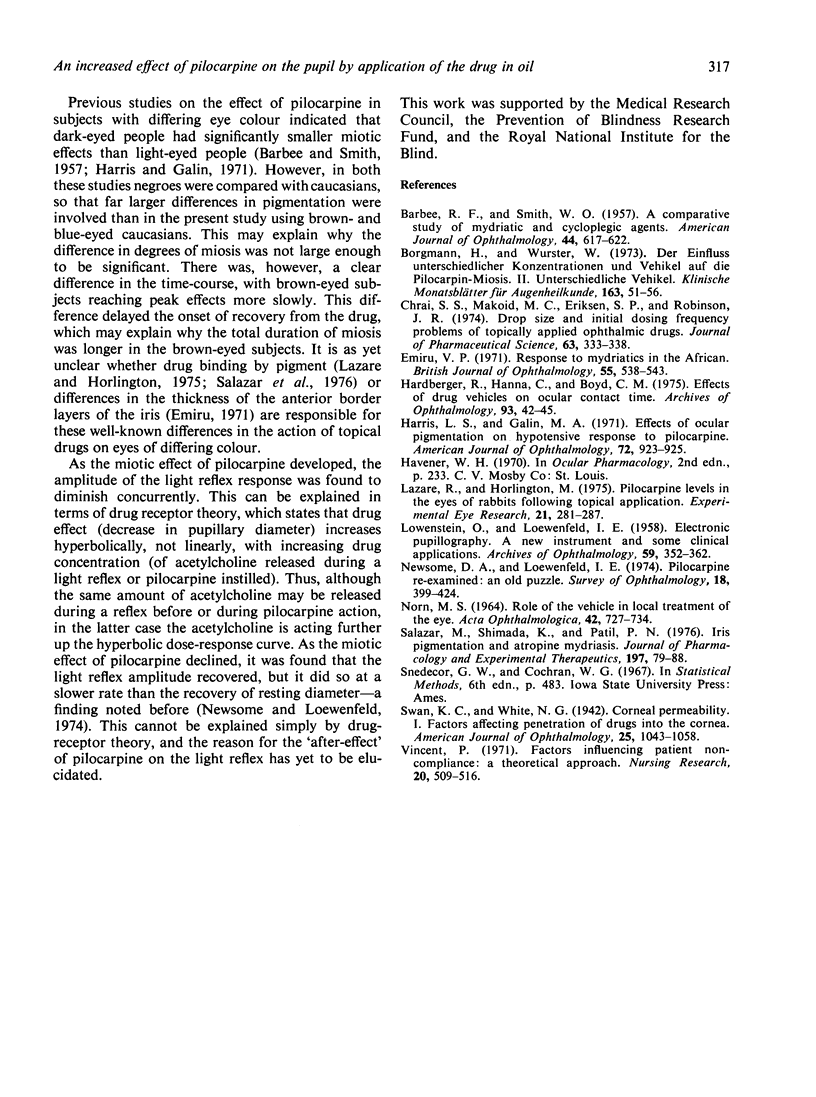Abstract
In healthy volunteers pilocarpine in an oily solution had a greater degree and duration of effect on the pupil than the same amount of drug given in aqueous solution. Blue- and brown-eyed subjects had similar degrees of miosis, but the time taken to reach peak effects was longer with the latter. It can be concluded that eye drops made with an oily solvent may provide an improvement in the treatment of glaucoma with pilocarpine.
Full text
PDF



Selected References
These references are in PubMed. This may not be the complete list of references from this article.
- BARBEE R. F., SMITH W. O., Jr A comparative study of mydriatic and cycloplegic agents; in human subjects without eye disease. Am J Ophthalmol. 1957 Nov;44(5 Pt 1):617–622. doi: 10.1016/0002-9394(57)90266-0. [DOI] [PubMed] [Google Scholar]
- Borgmann H., Wurster W. Der Einflubb unterschiedlicher Konzentrationen und Vehikel auf die Pilocarpin-Miosis. II. Unterschiedliche Vehikel. Klin Monbl Augenheilkd. 1973 Jul;163(1):51–56. [PubMed] [Google Scholar]
- Chrai S. S., Makoid M. C., Eriksen S. P., Robinson J. R. Drop size and initial dosing frequency problems of topically applied ophthalmic drugs. J Pharm Sci. 1974 Mar;63(3):333–338. doi: 10.1002/jps.2600630304. [DOI] [PubMed] [Google Scholar]
- Emiru V. P. Response to mydriatics in the African. Br J Ophthalmol. 1971 Aug;55(8):538–543. doi: 10.1136/bjo.55.8.538. [DOI] [PMC free article] [PubMed] [Google Scholar]
- Hardberger R., Hanna C., Boyd C. M. Effects of drug vehicles on ocular contact time. Arch Ophthalmol. 1975 Jan;93(1):42–45. doi: 10.1001/archopht.1975.01010020046008. [DOI] [PubMed] [Google Scholar]
- Harris L. S., Galin M. A. Effect of ocular pigmentation on hypotensive response to pilocarpine. Am J Ophthalmol. 1971 Nov;72(5):923–925. doi: 10.1016/0002-9394(71)91689-8. [DOI] [PubMed] [Google Scholar]
- LOWENSTEIN O., LOEWENFELD I. E. Electronic pupillography; a new instrument and some clinical applications. AMA Arch Ophthalmol. 1958 Mar;59(3):352–363. [PubMed] [Google Scholar]
- Lazare R., Horlington M. Pilocarpine levels in the eyes of rabbits following topical application. Exp Eye Res. 1975 Sep;21(3):281–287. doi: 10.1016/0014-4835(75)90099-8. [DOI] [PubMed] [Google Scholar]
- Norn M. S. Role of the vehicle in local treatment of the eye. Acta Ophthalmol (Copenh) 1964;42(4):727–734. doi: 10.1111/j.1755-3768.1964.tb01724.x. [DOI] [PubMed] [Google Scholar]
- Salazar M., Shimada K., Patil P. N. Iris pigmentation and atropine mydriasis. J Pharmacol Exp Ther. 1976 Apr;197(1):79–88. [PubMed] [Google Scholar]
- Vincent P. Factors influencing patient noncompliance: a theoretical approach. Nurs Res. 1971 Nov-Dec;20(6):509–516. [PubMed] [Google Scholar]


